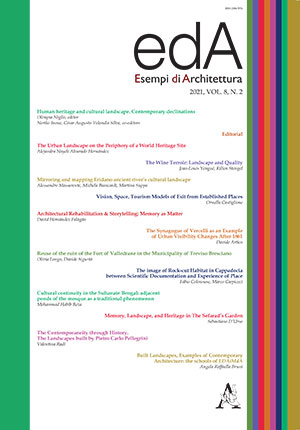Estratto da
ESEMPI DI ARCHITETTURA
International Journal of Architecture and Engineering
THE SYNAGOGUE OF VERCELLI AS AN EXAMPLE OF URBAN VISIBILITY CHANGES AFTER 1861
ESEMPI DI ARCHITETTURA
International Journal of Architecture and Engineering
THE SYNAGOGUE OF VERCELLI AS AN EXAMPLE OF URBAN VISIBILITY CHANGES AFTER 1861

In 1848, the Statute of the Kingdom of Sardinia introduced freedom of religion, albeit it openly provided for Catholicism to represent the state religion. One effect was the emergence of non-Catholic denominations, such as the Waldensians, and of non-Christian minorities, Jews included, on the public scene. Nevertheless, they were only tolerated, while the state did not renounce its basically Catholic identity.After the Kingdom of Italy was established on 17th March 1861, the ruling House of Savoy took on a definitely more advanced neutrality in matters of religion, which allowed for a wider public visibility of the formally still only ‘tolerated’ communities. That translated into the building of monumental places of worship meant to mark the urban landscape as signs of the freshly acquired equality of rights.In the case of the Italian Jews, a problem appeared in the form of a missing tradition in the field of indigenous sacral architecture. That led to a highly innovative search for patterns of reference. In the meantime, acceptability of the new places of worship in the urban environment was to be enhanced through the adoption of elements which would make them appear conventionally similar to Catholic churches.Of the five monumental synagogues built in Italy in the late 19th century, the one in Vercelli represents a major example of the general process of acquisition of urban visibility by Jewish communities.Keywords: Urban Visibility, Italian Jews, Synagogue.
| pagine: | 197-203 |
| DOI: | 10.4399/97888255398757 |
| data pubblicazione: | Dicembre 2020 |
| editore: | Aracne |








